Our team went out into the field looking for the best canine nutrition products worldwide. Our winner for this year is Pupper, which topped our charts in terms of ingredient quality as well as science-backed claims. Continue reading to discover all the best dog foods for Chihuahuas.
If you’re the proud parent of a chihuahua, then you know they require special care regarding their diet. Not just old dog food will do. Your little chi needs something specifically tailored to its small size and delicate constitution.
That’s why we’ve compiled a list of the 20 best dog foods for chihuahuas today! Keep reading for all the details.
What ingredients are best for chihuahuas?
When it comes to finding the best food for your chihuahua, there are a few things you should keep in mind. Chihuahuas are small dogs, so they need food that is high in protein and low in fat.
Secondly, since they are prone to dental problems, it is important to find a food that is easy to chew. Finally, since chihuahuas are prone to obesity, it is important to find a food that is low in calories.
Do Chihuahuas need special food?
No, chihuahuas do not need special food. However, there are a few things you should keep in mind when choosing food for your chihuahua.
Since they are prone to dental problems, it is important to find food that is easy to chew. Finally, since chihuahuas are prone to obesity, it is important to find a food that is low in calories.
Why are chihuahuas prone to dental issues?
Chihuahuas are prone to dental issues because they have small mouths and teeth. This makes it difficult for them to chew their food properly, which can lead to tooth decay and other problems.
How can I prevent my chihuahua from becoming obese?
You can do a few things to prevent your chihuahua from becoming obese. First of all, make sure you are feeding them food that is high in protein and low in fat. Secondly, make sure they are getting plenty of exercise. Finally, make sure you are not overfeeding them.
Do Chihuahuas need grain free food?
Despite his tiny stature, your Chihuahua continues to retain most of the biological adaptations of his wolf forefathers. So, he’ll eat fruits, vegetables, and grains, but he truly craves a meat-based diet! Choose meals that are free of artificial flavors and colors.
What can Chihuahuas eat and not eat?
Chihuahuas can eat and not eat a variety of things. They can eat fruits, vegetables, meats, and grains. However, they should not eat chocolate, onions, garlic, or anything else that is toxic to dogs. While there are many different types of food that are safe for Chihuahuas to eat, not all of them are necessarily healthy for them.
Is wet dog food good for Chihuahuas?
Wet dog food can be a great option for Chihuahuas, as it is often more nutrient-rich and palatable than dry food. However, it is important to choose a wet food that is specifically designed for small breeds like the Chihuahua, as regular wet foods can be too high in calories.
What’s the difference between wet dog food and dry dog food for Chihuahuas?
The main difference between wet and dry dog food is the moisture content. Wet dog food has a higher moisture content than dry food, which can be beneficial for dogs that are prone to dehydration. Additionally, wet dog food is often more nutrient-rich than dry food, as it contains more meat and organs.
How many times a day should a Chihuahua eat?
Chihuahuas should be fed twice a day, once in the morning and once at night. They should always have access to clean water. It’s important to feed them a variety of foods, including both wet and dry food, as well as fresh fruits and vegetables.
While there are many different types of food that are safe for Chihuahuas to eat, not all of them are necessarily healthy for them. It’s important to feed them a variety of foods, including both wet and dry food, as well as fresh fruits and vegetables.
The following are the 20 best dog foods for Chihuahuas in 2022:
1. Pupper Chicken Topper

The creator of Fuel, a grain-free and all-natural supplement, used exceptional ingredients to create the best health and peak performance. They use free range chicken and fresh produce that is full of nutrients.
This food is designed for all life stages and provides your chihuahua with the energy they need to live a long and healthy life. Pupper Fuel’s chicken recipe is one of the best dog foods for chihuahuas in 2022 because it is all-natural. The ingredients used are free range chicken and fresh produce that is full of nutrients.
2. Wellness Complete Health Small Breed Adult
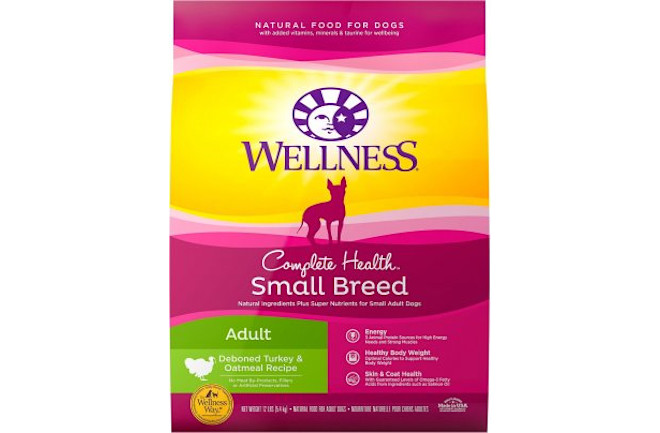
This small breed adult dog food from Wellness Complete Health is one of the best dog foods for chihuahuas in 2022. It is made with whole ingredients and provides your chihuahua with the nutrients they need to live a long and healthy life.
The ingredients used are free range chicken, fresh produce, and whole grains. This food is designed for all life stages and provides your chihuahua with the energy they need to live a long and healthy life.
Wellness Complete Health’s small breed adult recipe is one of the best dog foods for chihuahuas in 2022 because it is made with whole ingredients and provides your chihuahua with the nutrients they need to live a long and healthy life.
3. Instinct Raw Boost Toy Breed with Real Chicken
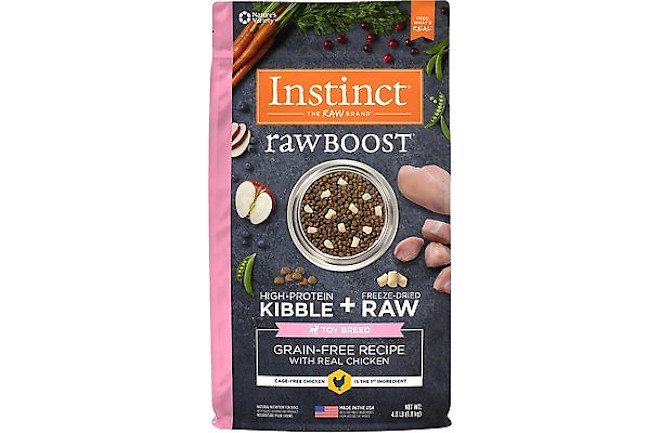
Instinct Raw Boost Toy Breed Grain-Free Recipe with Real Chicken & Freeze-Dried Raw Pieces Dry Dog Food is a meal that you can tailor to your dog’s specific nutritional requirements. It’s a better way to feed kibble because it includes bites of freeze-dried raw meat throughout.
This best dog food for chihuahuas has a perfect balance of protein, fat, and calories to encourage healthy weight. There’s also calcium and phosphorus for strong bones and teeth, as well as naturally occurring glucosamine and chondroitin for joint health and it all comes from the greatest ingredients from all over the world.
4. Royal Canin Adult Chihuahua Wet Dog Food
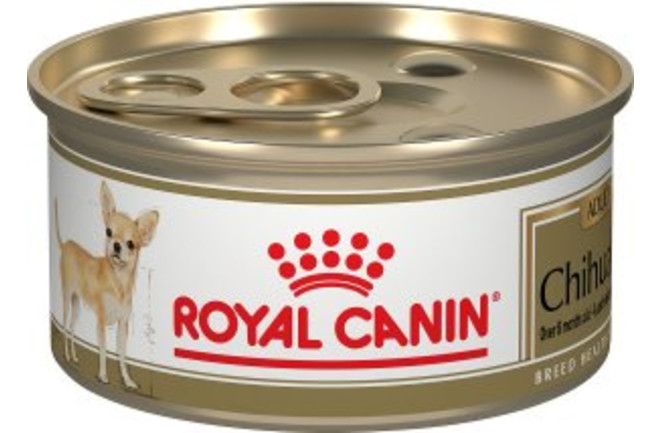
Image courtesy Chewy
Royal Canin Chihuahua Adult wet dog food is a tailored diet made with the specific needs of adult chihuahuas in mind. It has all of the nutrients they need to stay healthy and happy.
This recipe includes chicken, fresh produce, and whole grains. It is designed for all life stages and provides your chihuahua with the energy they need to live a long and healthy life.
Royal Canin’s adult chihuahua wet dog food is one of the best dog foods for chihuahuas in 2022 because it has all of the nutrients they need to stay healthy and happy.
5. Merrick Lil’ Plates Small Breed Wet
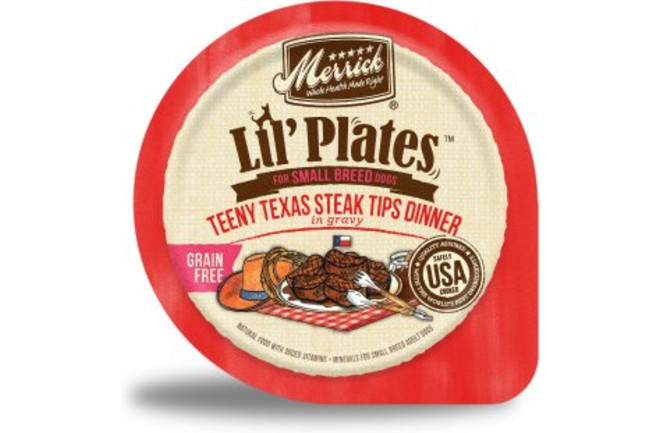
Image courtesy Merrick
Merrick Lil’ Plates Small Breed Grain-Free Wet Dog Food is a wet food that is perfect for small breeds. It includes chicken, fresh produce, and whole grains.
This recipe is designed for all life stages and provides your chihuahua with the energy they need to live a long and healthy life. Merrick Lil’ Plates Small Breed wet dog food is one of the best dog foods for chihuahuas in 2022 because it includes chicken, fresh produce, and whole grains.
6. Hills Science Diet Puppy Small Bites
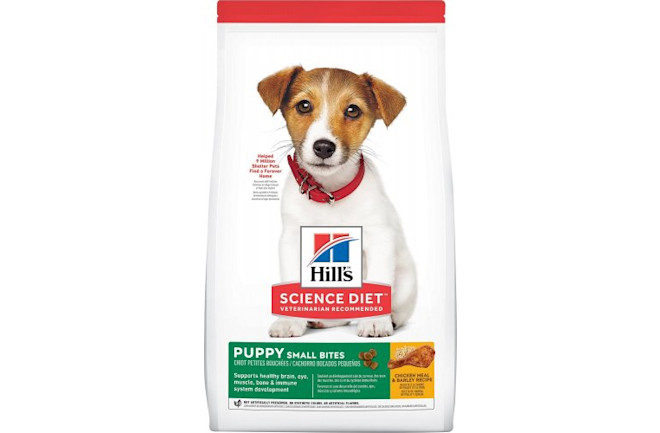
Image courtesy Hill’s Science Diet
Hill’s Science Diet Puppy Small Bites dry dog food is a tailored diet made with the specific needs of puppies in mind. It has all of the nutrients they need to stay healthy and happy.
This recipe includes chicken, fresh produce, and whole grains. It is designed for all life stages and provides your chihuahua with the energy they need to live a long and healthy life.
Hill’s Science Diet Puppy Small Bites dry dog food is one of the best dog foods for chihuahuas in 2022 because it has all of the nutrients they need to stay healthy and happy.
7. Iams ProActive Health Adult Minichunks
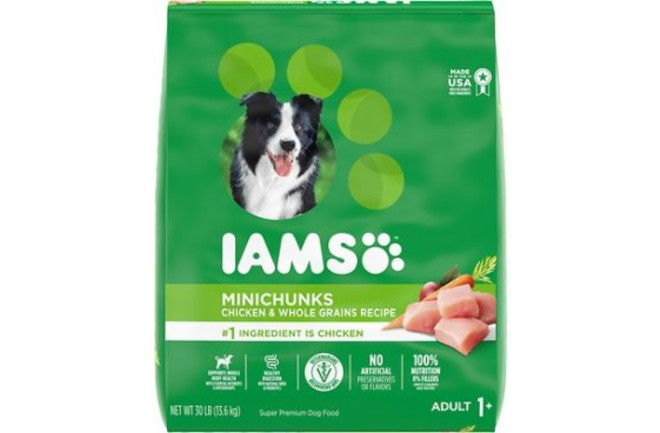
Image courtesy Iams
IAMS Mini Chunks high-protein dog food with bite-size chicken and whole grains is for adult dogs (7 lb. bag). IAMS Mini Chunks Dog Food was developed with tiny dogs in mind. This little dog food is created with excellent grains for energy, carrots, and beet pulp to help your pooch’s digestion move along quietly.
This dog food is high in essential elements and antioxidants, which promotes whole-body health. IAMS keeps it straightforward by avoiding the unpleasant fillers, synthetic preservatives, and flavorings that can irritate their tummies.
8. Blue Buffalo Life Protection Small Breed Senior

Image courtesy Blue Buffalo
The Blue Buffalo Life Protection Formula Small Breed Senior Chicken & Brown Rice Recipe is designed to meet the nutritional needs of senior dogs. It includes chicken, fresh produce, and whole grains.
This recipe is designed for all life stages and provides your chihuahua with the energy they need to live a long and healthy life.
9. The Farmer’s Dog Turkey Recipe
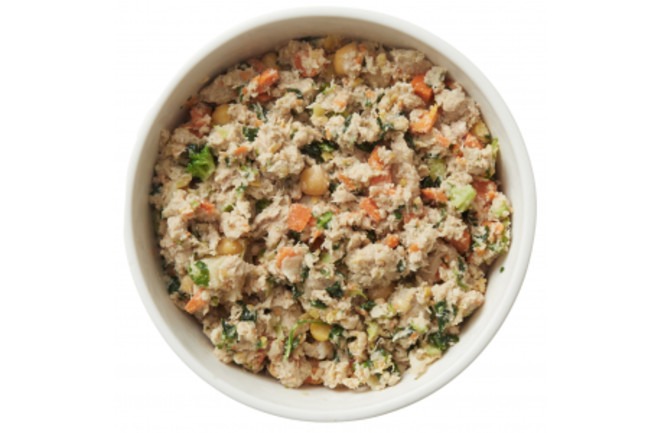
Image courtesy The Farmer’s Dog
The Farmer’s Dog Turkey Recipe is a grain-free wet food that is perfect for all life stages. It includes turkey, fresh produce, and whole grains.
This recipe is designed for all life stages and provides your chihuahua with the energy they need to live a long and healthy life.
10. Eukanuba Small Breed Adult Dog Food

Image courtesy Eukanuba
Your small breed dog is anything but basic, and he needs extraordinary nutrition to function at his peak. Eukanuba Adult Small Breed Dry Dog Food helps you fill your companion with fuel.
Glucosamine, chondroitin sulfate, and animal proteins assist to keep muscles sleek and flexible. DHA and vitamin E aid in the maintenance of a healthy brain function in tiny breed dogs. This adult dog food is high in fats and carbohydrates to help your dog stay active.
11. Nature’s Recipe Grain Free Salmon, Sweet Potato, and Pumpkin
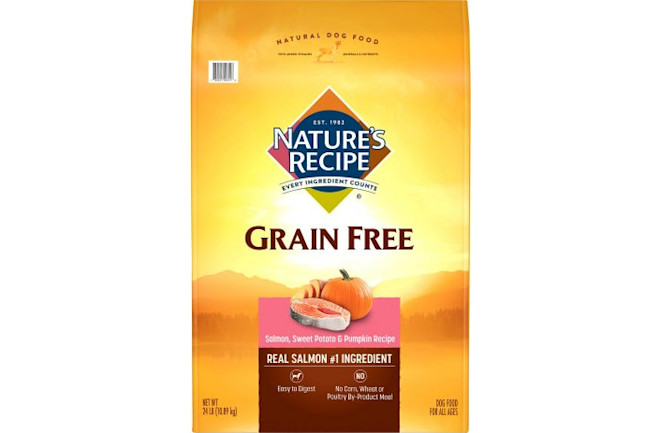
Image courtesy Nature’s Recipe
Nature’s Recipe Grain Free Salmon, Sweet Potato, and Pumpkin is a grain-free wet food that is perfect for all life stages. It includes salmon, sweet potato, pumpkin, and whole grains.
This recipe is designed for all life stages and provides your chihuahua with the energy they need to live a long and healthy life.
12. Taste of the Wild Appalachian Valley Small Breed Recipe
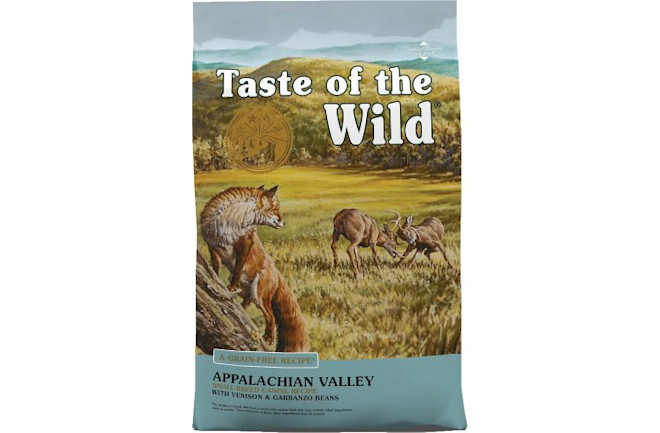
Image courtesy Taste of the Wild
Taste of the Wild Appalachian Valley Small Breed Recipe is a grain-free wet food that is perfect for all life stages. It includes venison, bison, lamb, and whole grains.
This recipe is designed for all life stages and provides your chihuahua with the energy they need to live a long and healthy life.
13. Merrick Classic Small Breed Dog Food
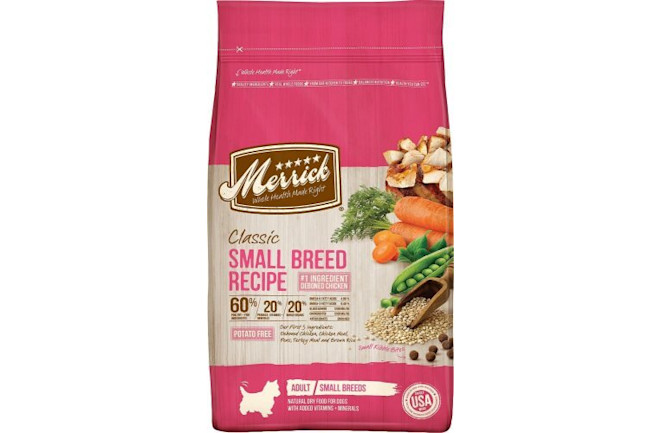
Image courtesy Merrick
Merrick Classic Healthy Grains Dry Dog Food Small Breed Recipe encourages your pint-sized companion to wag his tail. This wonderful dry food for small dogs has a smaller kibble size and actual deboned chicken as the first ingredient, making it ideal for little pups.
This food also includes rice and ancient grains like quinoa to assist with digestion, as well as vitamins and minerals for a comprehensive and balanced diet that comprises brown rice and other ancient grains such as quinoa. This dry dog food is high in omega fatty acids to aid in the development of healthy skin and a glossy coat while glucosamine and chondroitin support joint health.
It’s ideal for encouraging small dogs to develop strong muscles and is free of potatoes, peas, and lentils.
14. Nulo Freestyle Small Breed Dog Food
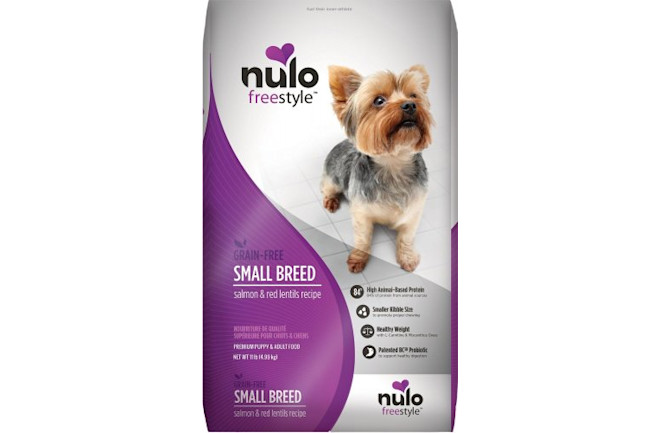
Image courtesy Nulo Freestyle
Nulo Freestyle Small Breed Dog Food is a grain-free wet food that is perfect for all life stages. It includes chicken, turkey, lamb, and whole grains.
This recipe is designed for all life stages and provides your chihuahua with the energy they need to live a long and healthy life.
15. Instinct Original Small Breed Dog Food

Image courtesy Instinct Raw
Instinct Original Small Breed Dog Food is a grain-free wet food that is perfect for all life stages. It includes chicken, turkey, lamb, and whole grains.
This recipe is designed for all life stages and provides your chihuahua with the energy they need to live a long and healthy life.
16. Now Fresh Small Breed Dog Food
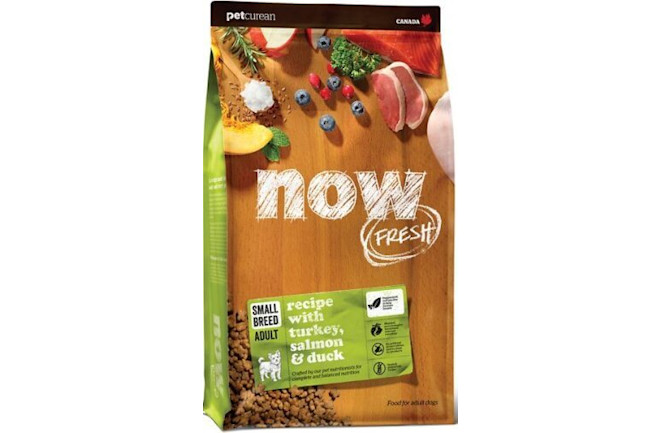
Image courtesy Now Fresh
Now Fresh Small Breed Dog Food is a grain-free wet food that is perfect for all life stages. It includes chicken, turkey, lamb, and whole grains.
This recipe is designed for all life stages and provides your chihuahua with the energy they need to live a long and healthy life.
17. Halo Grain Free Small Breed Wet Dog Food
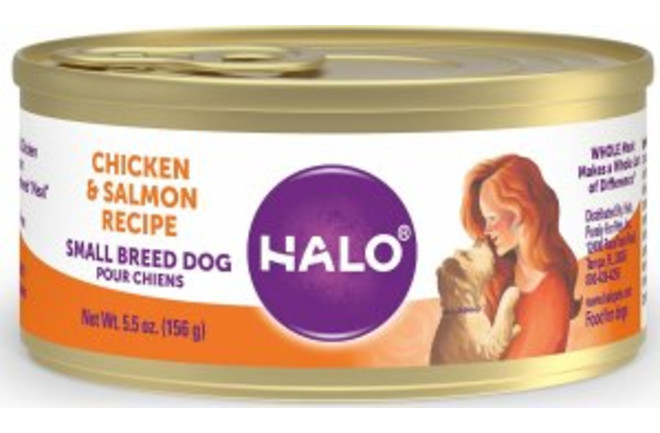
Image courtesy Halo
Halo Small Breed Grain Free Turkey & Duck Recipe is a favorite among picky playmates and pet parents. This wet food is made of responsibly sourced ingredients, such as high-quality whole meat and non-GMO fruits and veggies.
The smaller furry pals will love this dish, which was created especially for them. It’s packed with healthy fats, protein, and antioxidants that keep pets looking and feeling their best. To sweeten the deal, your pal can absorb and utilize the nutrients of the food more effectively because there are no meat meals, grains, or artificial additives in it.
This Halo brand wet food will satisfy your entire canine or feline family, thanks to its high-quality ingredients, wholesome meals, and fantastic taste.
18. Diamond Naturals Small Breed Chicken and Rice
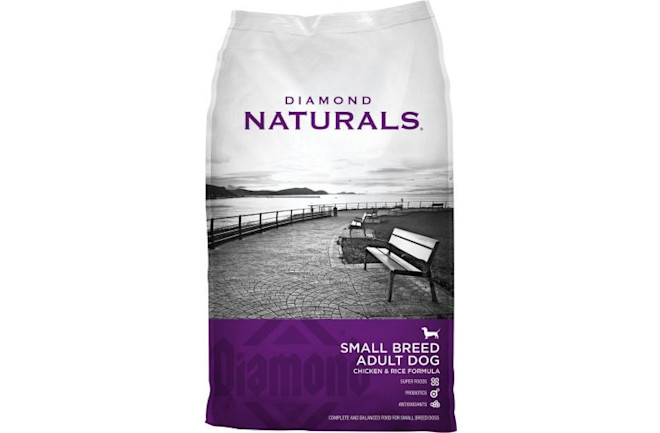
Image courtesy Diamond Naturals
The highly digestible Diamond Naturals Small Breed Chicken and Rice Formula is made with cage-free chicken, whole grains, and vegetables. It’s also enhanced with probiotics for better digestion and immunity.
This recipe has no artificial flavors, colors, or preservatives and is suitable for all life stages. The smaller kibble size is perfect for chihuahuas, and the chicken flavor is sure to be a hit.
19. Nutro Wholesome Essentials Small Breed Adult Chicken
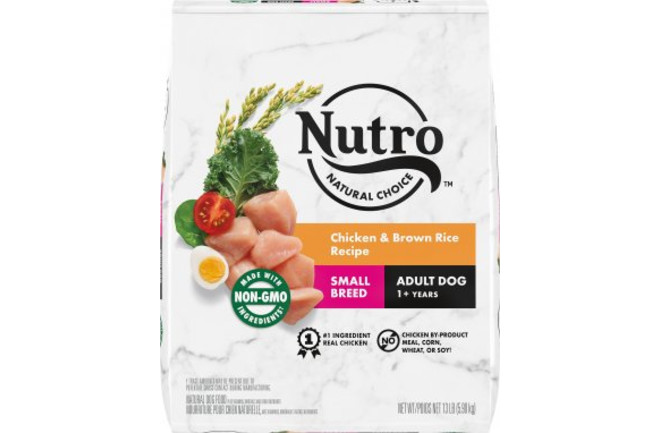
Image courtesy Nutro Natural Choice
If your dog’s a fan of tiny bites, Nutro Natural Choice Small Bites Adult Dry Dog Food, Chicken & Brown Rice Recipe Kibble is a great choice. The product has tasty chicken that provides a high-quality protein source for the ingredient list.
This is a high-quality dry dog food that also has antioxidants to assist with healthy immunity and natural fiber to aid in proper digestion. You may feel good about feeding your pet this nutritional and flavorful dinner free of chicken by-product meal, corn, wheat, and soy. It’s ideal for smaller dogs and those older than one year old!
20. CESAR Small Breed Dry Dog Food Filet Mignon Flavor with Spring Vegetables
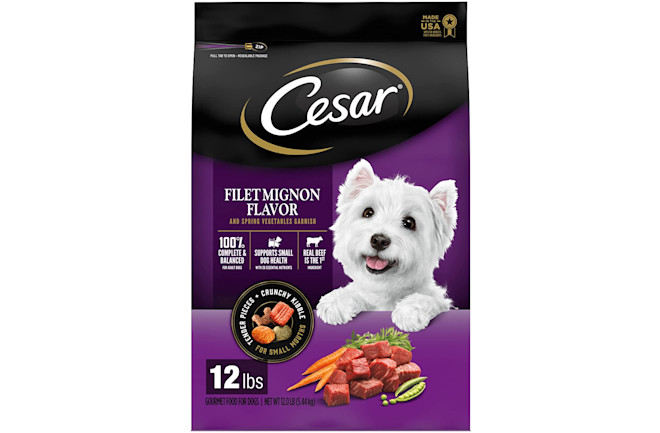
Image courtesy Amazon
CESAR Filet Mignon Flavor with Spring Vegetables in Sauce is a gourmet dry dog food for small breeds. The filet mignon flavor will make your chihuahua feel like a VIP, and the spring vegetables provide essential nutrients.
This recipe is formulated for small breed dogs and contains no fillers or artificial flavors. It’s also free of corn, soy, and wheat. Your chihuahua will love the taste of CESAR Filet Mignon Flavor with Spring Vegetables in Sauce, and you’ll love knowing they’re getting a nutritious meal.
What’s the best diet for a chihuahua?
The best diet for a chihuahua is one that is high in protein and fat, and low in carbohydrates. Chihuahuas are very active dogs, so they require a lot of energy to maintain their activity level. A diet that is high in protein and fat will help to provide this energy, while a diet that is low in carbohydrates will help to keep their weight down.
Tips for Switching Your Chihuahua to a New Dog Food
If you are thinking about switching your chihuahua to a new dog food, there are a few things that you should keep in mind.
First, make sure that the new food is high in protein and fat, and low in carbohydrates. Second, transition your chihuahua to the new food slowly, over the course of a week or two.
Start by mixing a small amount of the new food in with their old food, and gradually increase the amount of new food that you’re giving them. Finally, make sure that you’re feeding your chihuahua the right amount of food for their activity level.
Should I feed my chihuahua a raw dog food diet?
This is a question that many chihuahua owners ask themselves. The answer is not as simple as yes or no. Each dog is different and what works for one may not work for another. There are pros and cons to both raw and kibble diets, so it’s important to do your research before making a decision.
What size kibble can my chihuahua eat?
Chihuahuas are notorious for having small mouths and teeth. This can make it difficult to find a kibble that they can eat comfortably. Small breeds like chihuahuas typically do best with a small kibble size.
You may need to experiment with a few different brands and sizes before finding the perfect fit for your chihuahua.
What is the best wet food for my chihuahua?
Wet food can be a great option for chihuahuas, especially if they are picky eaters or have trouble chewing dry kibble. It’s important to find a wet food that is high in protein and low in carbohydrates. Wet food can also be a good way to add moisture to your chihuahua’s diet, which is important for their overall health.
How will I know if my chihuahua likes their new food?
The best way to know if your chihuahua likes their new food is to watch their behavior. If they seem interested in the food and are eating it eagerly, then chances are they like it. On the other hand, if they turn their nose up at it or leave most of it uneaten, you may want to try something else.
It’s also important to keep an eye on your chihuahua’s weight and energy levels. If they are losing weight or seem lethargic, it could be a sign that they are not getting enough nutrition from their food.
Feeding your chihuahua the right food is important for their health and well-being. With a little trial and error, you should be able to find a food that they love and that meets their nutritional needs.
Final Thoughts on 20 Best Dog Foods for Chihuahuas in 2022
There are a lot of different dog foods on the market, so it can be difficult to know which one is best for your chihuahua. We hope that our list of best dog foods for chihuahuas has helped open your eyes to the variety of options available out there.
Start looking at each of the options we’ve featured here today and choose one that seems like the best fit for your little canine friend.




